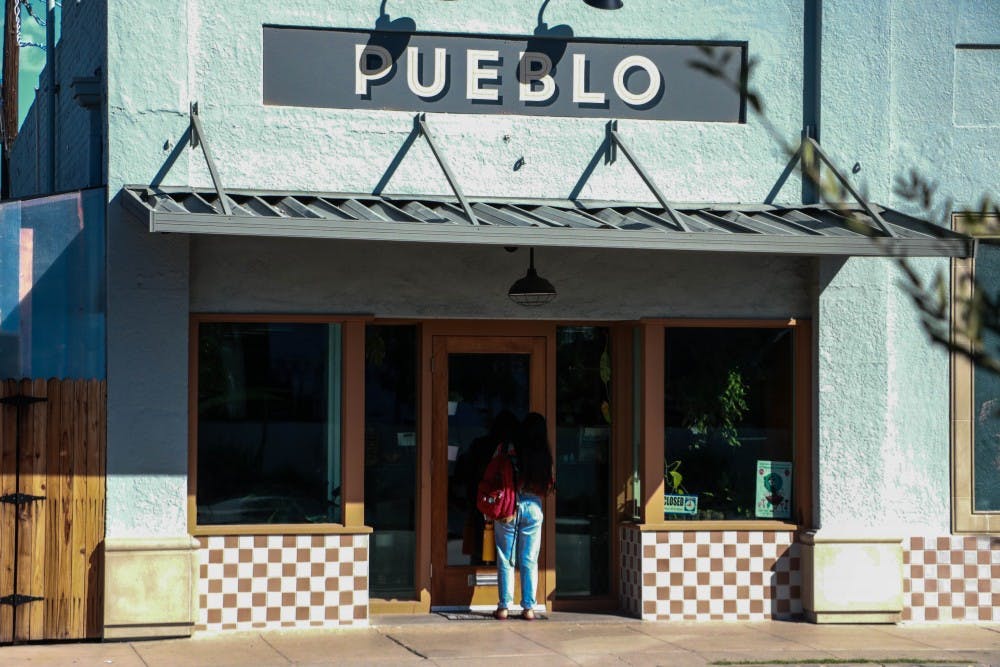A few short years ago, downtown Phoenix's then-sleepy Historic Garfield neighborhood was full of foreclosed houses, a far cry from the bustling Roosevelt Row a few blocks away.
But the neighborhood is in the midst of an awakening, centered around four corners on the intersection of 10th and Pierce streets.
An array of businesses have popped up at that intersection — dubbed the "four corners" of Garfield — in the past two years, though some say that this could come at the expense of the neighborhood's previous residents.
“There was already a good foundation of people in the neighborhood,” Doug Robson, owner of Gallo Blanco, a Mexican restaurant at the northwest corner of the intersection.
So how exactly does a quiet neighborhood start to see an uptick in activity? Hipsters.
"There's this idea of a creative class," said Jason Kelley, interim program director for the master's program in urban and environmental planning at ASU, said. "Artists and other creative types are attracted to walkable, higher density, mixed-use urban environments."
And that's what Garfield has become as it has densified and added commercial activity.
Kelley said that when these creative types converge on an area, money and private investors soon follow.
Gallo Blanco relocated to Garfield in July 2017 following a brief hiatus after the restaurant's location in the Clarendon Hotel closed.
“I had a friend come to me and say he had a location for Gallo Blanco … I checked it out, and it just felt right,” Robson said. “I like the fact that it was a historic building, it’s been a cornerstone for the neighborhood for a long time.”
Robson worked hard to preserve the integrity of the building by leaving most of the building in its original state and adding on only when necessary.
Michael Lanier, owner of downtown plant shops The Bosque and Pueblo, said when he moved to Garfield there was a perception that it wasn't safe.
“My mom called me crying,” Lanier said. “'You can’t (move to the neighborhood), it’s just not safe'.”
But he moved nonetheless, attracted by cheaper real estate. Like Robson, Lanier and his business partner also wanted to keep the building as simple as possible and felt as though even replacing the walls might have taken away from the shop’s rustic feel.
“Pueblo means community (in Spanish)," Lanier said. "So we wanted to keep that vibe."
That's the paradox of moving into Garfield. Once a cheaper alternative to the arts district, the increased attention has raised land prices in the area.
According to real estate site Trulia, housing values have increased by almost 25 percent in the last three years, which is higher than the state average.
However, it's not just housing values that have seen an uptick in the past few years.
All of the properties at the 'four' corners location have had their properties increase in value.
The location of Gallo Blanco saw an over 300 percent rise in the property value since 2017.
While 1002 E. Pierce St., the location of Fraley's Salon and Pueblo, has seen more modest hikes in property values, they have still been rising steadily over the past few years.
Haley Fraley lived in Garfield for 15 years and would often drive by the corner and think about staking her claim in one of the buildings.
In November of 2017, she opened Fraley’s Salon, which specializes in environmentally-friendly techniques for hair care.
“My idea was just ‘it would be great to have a salon in a neighborhood atmosphere,’” Fraley said.
Owners of these business also know in order to keep the growth in the area progressing, it’s important to help those out who live in the neighborhood.
“If you live in the neighborhood, you always get five percent off (purchases),” Lanier said. "We always try to hire people who live in the neighborhood.”
Robson feels the same way and wants Gallo Blanco to be a place neighborhood residents can rely on for a first job or just someplace to find a laid-back work environment.
As the fear of gentrification starts to grow in the area, owners are thinking about the customers in the neighborhood first.
“We don’t try to price people in or out,” Lanier said. “We just price things at what’s fair for the plant.”
Lanier said the owners won’t hesitate to help out and donate what they can for fundraisers and other community needs, because they always want to be as community-friendly as possible.
Although Fraley and Lanier no longer live in the area, their businesses are a way to still have a bond with the neighborhood.
“We kind of thought we lived in the neighborhood, and we don’t want to get pushed out,” Fraley said. “If we have businesses, we can kind of keep that vibe of the community.”
Regardless of what comes next, there is always going to be a connection between the neighborhood and those who inhabit it.
“As the neighborhood grows, we grow with it.” Robson said.
Reach the reporter at Barbara.Smith.3@asu.edu or follow @barbarasmiith on Twitter.
Like The State Press on Facebook and follow @statepress on Twitter.




